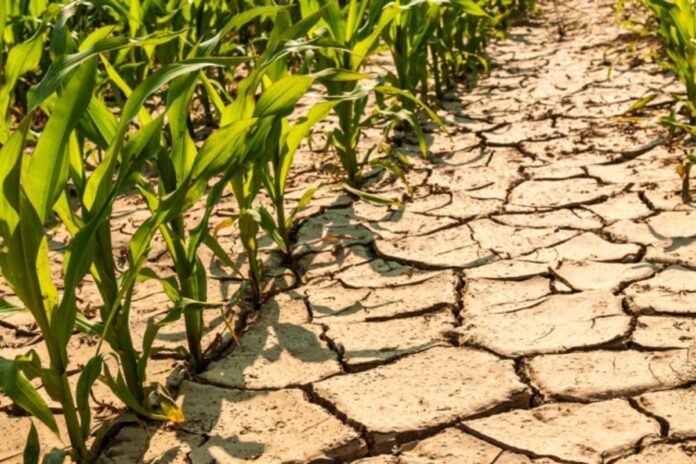Assam faces an escalating crisis as farmers contend with drought and soaring temperatures. The state’s agricultural landscape, which thrives on monsoon rains, has turned into a desolate scene of parched fields and wilting crops. Farmers in regions such as Lakhimpur, Dhemaji, and Sonitpur report that the lack of sufficient irrigation facilities exacerbates the challenges they face. With temperatures reaching alarming levels, the farmers’ plight is becoming more desperate as they struggle to sustain their livelihoods.
The monsoon, which typically brings much-needed relief to the region, has been inconsistent this year. Farmers expected timely rains to nourish their fields, but the reality has been disappointing. Instead of the usual downpours, they have encountered extended dry spells. This situation leaves them with dwindling water supplies, forcing many to rely on depleting groundwater sources. The anxiety in the air is palpable as farmers watch their crops wither under the relentless sun, knowing that their families depend on the success of their harvests.
The inadequate irrigation facilities in Assam further complicate matters. Many farmers lack access to modern irrigation systems, making them vulnerable to the whims of nature. Traditional methods, while deeply rooted in local practices, often prove insufficient in times of drought. Farmers find themselves stuck in a cycle of dependency on unpredictable rainfall, unable to implement efficient irrigation techniques that could save their crops. The government’s initiatives to improve irrigation infrastructure have not yet reached many of the remote villages where farmers desperately need support.
Compounding the issue is the soaring price of essential farming inputs. As drought conditions persist, farmers face rising costs for seeds and fertilizers. This financial strain pushes many to take loans from local moneylenders, putting them further into debt. The once vibrant agricultural sector in Assam now resembles a battleground where farmers fight against both nature and economic pressures. Each day becomes a test of endurance as they grapple with mounting challenges and uncertainties.
Community support emerges as a vital lifeline for these farmers. Local organizations and NGOs are stepping in to provide assistance, offering workshops on sustainable farming practices and water conservation techniques. These initiatives aim to equip farmers with the knowledge and tools needed to adapt to the changing climate. Despite the bleak circumstances, many farmers remain hopeful that with proper guidance and community solidarity, they can weather this storm.
Resilience shines through as farmers share stories of perseverance. They discuss their efforts to implement rainwater harvesting systems, crop rotation methods, and organic farming techniques. Such practices not only help conserve water but also enhance soil health. As they work together, communities strengthen their bonds, recognizing that collective action can lead to more sustainable solutions in the face of adversity.
The situation has drawn attention from policymakers and agricultural experts. Conversations around climate change and its impact on agriculture have intensified. Experts emphasize the need for comprehensive strategies to combat the effects of rising temperatures and irregular rainfall patterns. They advocate for investment in irrigation infrastructure, improved water management practices, and access to climate-resilient crop varieties. The dialogue surrounding these issues highlights the urgency of addressing the needs of Assam’s farmers to ensure food security and sustainable development.
As the crisis deepens, the government has a critical role to play in supporting farmers during this challenging period. Increased funding for irrigation projects, subsidies for essential inputs, and training programs on sustainable farming practices can help revitalize the agricultural sector. A collaborative effort involving local communities, government bodies, and agricultural organizations can pave the way for innovative solutions to combat drought and improve irrigation facilities.




